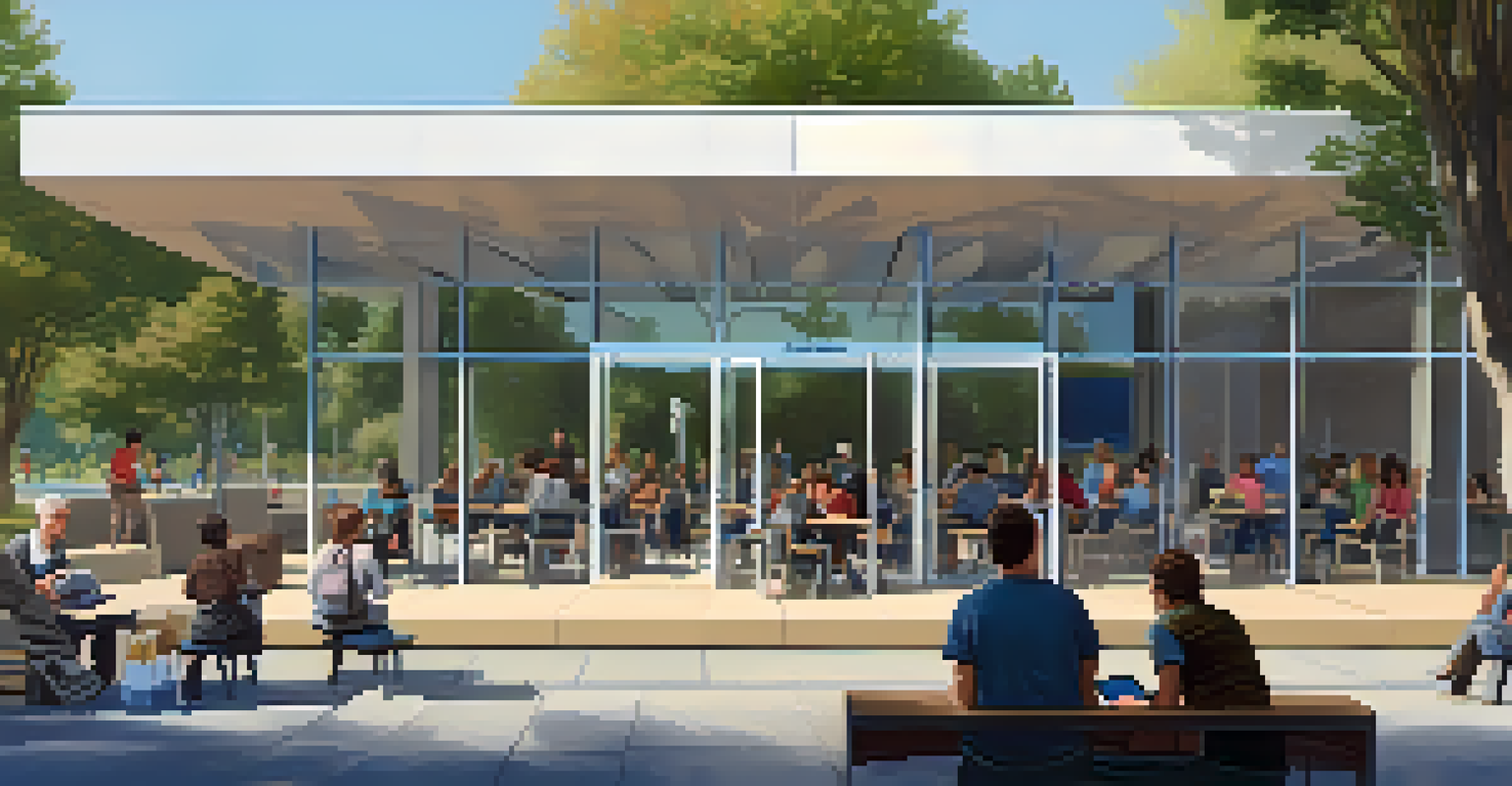Community Programs Addressing Digital Inequities in San Jose

Understanding Digital Inequities in San Jose
Digital inequities refer to the gaps in access to technology and the internet. In San Jose, a city known for its tech innovation, these disparities are particularly striking. Many low-income families struggle to access reliable internet, which can hinder educational and job opportunities.
Access to technology is key to unlocking the potential of individuals and communities.
The COVID-19 pandemic further exposed these inequalities, as remote learning and telecommuting became the norm. Students without proper devices or internet access found themselves at a severe disadvantage. This situation highlighted the urgent need for community programs to address these challenges.
Recognizing this issue, various local organizations and government initiatives have emerged to bridge the digital divide. These programs aim not only to provide access but also to empower individuals with essential digital skills.
Key Community Programs Addressing the Issue
Several community programs have made significant strides in addressing digital inequities. For instance, the San Jose Public Library offers free internet hotspots and computer access at multiple locations. This initiative allows families to connect and engage in online learning or job searching without the burden of costs.

Another noteworthy program is the Digital Inclusion Initiative, which focuses on equipping residents with the necessary skills to navigate digital platforms. By providing training sessions and workshops, participants gain confidence and competence in using technology effectively.
Digital Divide in San Jose
Many low-income families in San Jose lack reliable internet access, which hinders their educational and job opportunities.
These programs not only facilitate access but also create a supportive environment for learning. By fostering community engagement, they encourage collaboration and knowledge sharing among residents.
The Role of Local Government in Digital Equity
Local government plays a crucial role in promoting digital equity through policy and funding. Initiatives like the San Jose Digital Equity Strategic Plan aim to ensure that all residents have access to affordable internet and digital training. This strategic approach is essential for creating a more inclusive digital landscape.
The digital divide is not just about access to technology; it’s about access to opportunities.
Moreover, the government collaborates with community organizations to maximize resources and reach underserved populations. By pooling efforts, they can design programs that are both effective and sustainable in the long term.
Through these partnerships, the local government is working towards reducing the digital divide, ensuring that San Jose remains a place where everyone can thrive in the digital age.
Success Stories from the Community
Success stories from individuals participating in these programs showcase their impact. For example, a student who once struggled to complete homework due to lack of internet access was able to improve their grades significantly after receiving a hotspot and tutoring. This change not only enhanced their academic performance but also boosted their confidence.
Another inspiring story comes from a local entrepreneur who took part in a digital marketing workshop. Equipped with new skills, they successfully launched an online business, demonstrating how access to digital tools can lead to economic empowerment.
Community Programs Making Impact
Local initiatives like the San Jose Public Library and the Digital Inclusion Initiative are bridging the digital divide by providing access and essential skills.
These narratives highlight the transformative power of community programs. They are not just about providing access; they are about fostering opportunities and enabling individuals to achieve their goals.
Challenges Faced by Digital Inclusion Initiatives
Despite the positive strides made, many challenges remain for digital inclusion initiatives. Limited funding and resources can hinder program expansion and sustainability. Many organizations rely on grants and donations, which can be unpredictable and insufficient.
Additionally, reaching the most marginalized communities can be difficult. Some individuals may be unaware of available resources or hesitant to seek help due to stigma. Building trust and awareness within these communities is essential for successful outreach.
Addressing these challenges requires innovative solutions and continued advocacy. By working together, stakeholders can enhance the effectiveness of programs and ensure that no one is left behind.
The Importance of Community Engagement
Community engagement is vital for the success of digital inclusion efforts in San Jose. Programs that involve residents in their design and implementation tend to be more effective. When community members feel a sense of ownership, they are more likely to participate and benefit from the resources offered.
Engagement can take many forms, such as feedback sessions, volunteer opportunities, or collaborative projects. These interactions help organizations understand the specific needs of the community and tailor their initiatives accordingly.
Need for Ongoing Collaboration
Future efforts to achieve digital equity will require continued collaboration between local government, nonprofits, and the private sector to address the evolving needs of residents.
By fostering a culture of collaboration, community programs can create a more inclusive environment where everyone has a voice and an opportunity to thrive in the digital world.
Looking Ahead: Future of Digital Equity in San Jose
As we look to the future, the need for continued focus on digital equity is clear. Rapid technological advancements mean that the digital divide could widen if proactive measures are not taken. Community programs must evolve to meet the changing needs of residents, ensuring that everyone has access to the tools necessary for success.
Collaboration between local government, nonprofits, and private sector partners will be crucial. By pooling resources and expertise, these stakeholders can develop innovative solutions that address the root causes of digital inequities.

Ultimately, the goal is to create a San Jose where everyone, regardless of their background, has the opportunity to participate fully in the digital age. Together, we can build a brighter, more inclusive future.